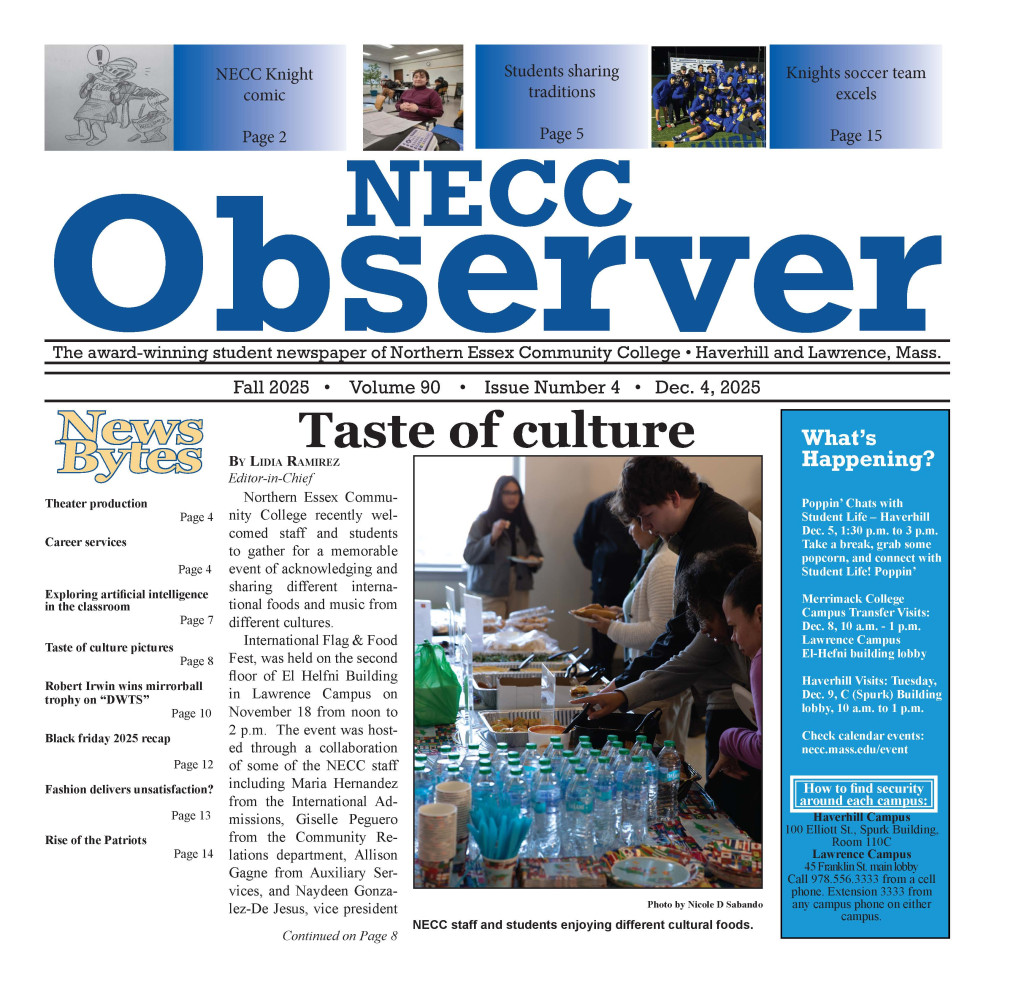What does active shooter training entail and is it effective?
With mass shootings seemingly becoming more and more common, many schools and workplaces have been holding active shooter training in order to better prepare employees and students in the event that the unthinkable occurs. But do these trainings really work, are they doing more harm than good, and what do these trainings actually look like?
The Department of Homeland Security states “In many cases, there is no pattern or method to the selection of victims by an active shooter, and these situations are, by their very nature, unpredictable and evolve quickly.Resources such as posters and pocket guides raise awareness of the indicators of an active shooter incident and how to respond.”
Ashley Credit a student here at NECC says she attended part one of a two part active shooter training at the daycare where she is employed. She stated “It was disturbing and I was terrified.” Credit reported that the instructor showed them two videos of actual mass shootings. These videos included the Columbine shooting in 1999 and the mosque shooting in New Zealand earlier this year. “Watching people’s lives end so brutally was horrific.”, she stated in regards to the videos. Credit chose not to attend the second part of this training which included instructors firing rubber bullets at teachers and staff members in order to simulate a real active shooter situation. She stated that the first part was so traumatizing she felt she would not be able to get through part two.
According to the South Florida Sun Sentinel in their Pulitzer Prize winning series on the Parkland shooting at Marjory Stoneman Douglas High School, 34 people were shot however no one was shot on the second floor which begs the question, what did the students and staff on this floor do right?
The Sun Sentinel stated, “In Viswanathan’s second-floor class, the door knob rattled as teacher and students huddled tightly in a taped off corner, lights out…She had locked the door before class that day. Weeks before, she had taped off part of the classroom next to the door to serve a “safe space” or “hard corner” for students to hide.” The Sun Sentinel noted she had little training but her instincts were what saved lives.
NECC liberal arts: writing major and Observer Features Editor Mariella Mendez has attended multiple active shooter training awareness courses throughout her time in high school and more recently for her job at a local middle school. Mendez stated, “ I think the new algorithm and process they have for active shooter training is helpful and personally it made me feel prepared at the time, however no one is really ever prepared for that kind of situation and sometimes the rules of active shooter training may go out the window.”
Mendez reported that she practiced what is commonly known as The A.L.I.C.E. drill which in an acronym for, Alert, Lockdown, Inform, Counter, Evacuate. Mendez stated that part of the training she attended included, “A faculty or staff member /police officer would walk around with a fake gun…they made it seem as real as possible.” Mendez works with kids grades K-8 and says they’ve all done ALICE training at least once.
She stated, “ I do think active shooter training should be done. Yes, instructors will have to change their language and approach depending on different age groups but I think it’s essential because these tragedies are happening more and more frequently.”
However, many people are not so keen on teaching young children these drills fearing it may be too scary and anxiety inducing. Kenneth Trump, President of the National School Safety and Security Services, a Cleveland-based national consulting firm specializing in school security and emergency preparedness training, stated that schools shouldn’t train young children in ALICE response when school shootings, typically the focus of such drills, are statistically rare. He also stated that ALICE “preys on the emotions of today’s active shooter frenzy that is spreading across the nation.
Erin Earley a student here at NECC and former teacher said she also experienced active shooter training. “They came in and we were told to go into our building, hide and lockdown and when the alarm went off you had to find your way out without getting caught. Some attempted to escape others chose to stay.” She also stated that there wasn’t and helpful instructions on how to get out of the building.
“There weren’t any guidelines given we had to figure it out for ourselves but for the most part people stayed calm,” Earley reported, “it was helpful in terms of being aware our surrounding but it was difficult getting the kids out and keeping them same. They didn’t go over a waiting spot or what our policy should be or any final details.”
Active shooter training is becoming increasingly popular but almost no studies on its effectiveness have been carried out.

